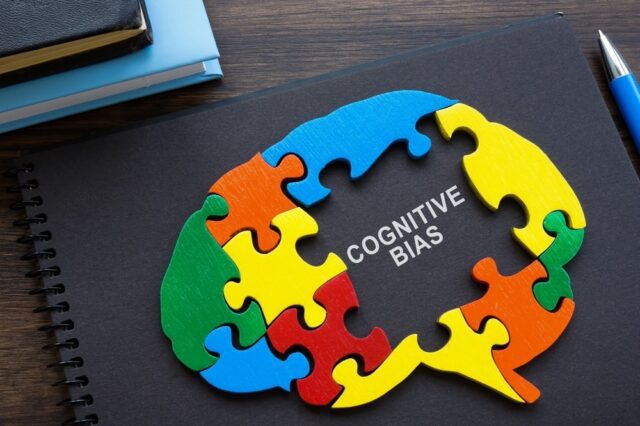A staggering 85% of employees experience conflict at work, with nearly a third facing it on a near-constant basis.
Conflict is not a workplace malfunction. It is a signal, a tension point, or a story unfolding beneath the surface. When we start paying attention to how conflict shows up and why, it becomes a doorway to better relationships, stronger teams, and more durable solutions.



Understanding Conflict
Conflict in the workplace can look like a lot of things. Sometimes it is loud. Sometimes subtle. But it almost always carries both emotional and structural weight. A missed email might feel personal when it is really a symptom of role ambiguity. What starts as a quick disagreement might be a signal of goal incompatibility or misaligned organizational goals. These are not just random flare-ups. They follow patterns, and once you begin to understand those patterns, you are better equipped to change what happens next.Different Conflict Types
There are different conflict types, and they fall into four main categories: intrapersonal, interpersonal, intergroup, and inter-organizational. Each one unfolds differently, but they often feed off the same core tensions.Intrapersonal conflict
Happens within one person. Maybe they are unsure about how to raise a concern, or they feel torn between their own needs and expectations from leadership. These internal struggles might seem invisible, but they can lead to hesitation, burnout, or avoidance if left unaddressed.Interpersonal conflict
Happens between individuals, such as two team members who frequently clash over communication style. The underlying issue may not be about their tasks but rather about perceptions or how one party interprets the actions of the other party.Intergroup conflict
Shows up between departments, teams, or divisions. This is where resource allocation issues, differing priorities, or historical grievances come into play. Tensions grow when groups compete for limited resources without clear agreements or shared goals.Inter-organizational conflict
Occurs between different companies or institutions. It may center on contracts, competition, or cultural mismatches. These tensions often stem from mismatched organizational goals or perceived interdependence.Common Forms in the Workplace
There is more to conflict than where it happens. It also matters how it takes shape. Researchers have identified several common types, each with its own triggers and outcomes. Goal conflict arises when two persons or teams are aiming for incompatible goals. It is not that either is wrong; they are simply pulling in opposite directions. Cognitive conflict revolves around differences in how people interpret facts, prioritize data, or approach problem-solving. These kinds of interpersonal differences are sometimes healthy. However, when communication breaks down, even minor disagreements can negatively affect decision-making. Affective conflict is the emotional kind. It can involve irritation, resentment, or just that sense that the other party “does not get it.” These are often rooted in unspoken histories or unacknowledged differences. Behavioral conflict shows up through actions. Examples of such workplace conflict include cutting someone off in meetings, failing to follow up, or subtle opposition. This is where the surface behaviors mask deeper tensions, whether about interests, status, or identity. There are three overlapping conflict categories: task, process conflict, and relationship.-
- Task conflict is about what needs to be done.
-
- Process conflict deals with how it gets done, such as deadlines, roles, or strategies.
-
- Relationship conflict is where the emotion lives.

Common Characteristics of Conflict
You can almost feel it before anyone says a word. The tense pause, the shift in tone, and the emails that read just a little too sharp. Conflict has characteristics. Once you start recognizing them, you see how quickly a small crack can become a canyon if ignored.1. Miscommunication and Misunderstandings
Most workplace conflicts do not start with hostility. They start with confusion, such as someone being unclear on expectations. Another assumes blame where none was meant. This breakdown in communication is common when there is role ambiguity, a lack of open communication channels, or filtered feedback. Without strong communication skills, even small things, such as missed meetings, delayed approvals, or conflicting instructions, can spiral into interpersonal conflict. Each party perceives something different, and the same situation begins to take on wildly different meanings. These are not always dramatic events. In fact, they are often subtle. However, the accumulation of those small disconnects can undermine effective communication across entire organizations.2. Emotional Defensiveness and Lack of Trust
Conflict is never just logical. It comes with feelings, frustration, insecurity, and, sometimes, even shame. When those feelings go unnamed, people shut down. They defend and project. Conflict occurs not just because of what was said but how it was felt. This emotional undercurrent erodes trust and, with it, the ability to work toward a shared solution. One party might read feedback as an attack, while the other party believes they were just being direct. These mismatches in perceptions and emotional tone make resolution harder to reach. When people do not feel psychologically safe, they stop sharing ideas. They disengage and retreat. This emotional withdrawal can harm relationships and organizational dynamics as a whole.3. High-Conflict Behavior Patterns
Some conflicts seem to follow people from one job to the next. Often, it is because certain behavior patterns show up again and again. High-conflict people tend to:-
- Blame others constantly
-
- Engage in name-calling or personal attacks
-
- Use all-or-nothing thinking
-
- React emotionally and impulsively
-
- Refuse to reflect on their role in the disagreement
4. Slow Builds vs. Sudden Escalations
Not all conflicts explode. Some simmer for weeks or months before anyone even notices. These are the “slow broils.” A missed promotion, a string of dismissive comments, or a workload that keeps growing without recognition. Each instance may seem small, but over time, they lead to bigger breakdowns. Then, there are “big bangs.” These are the moments when everything erupts: shouting matches in meetings, dramatic email threads, or sudden resignations. Finally, there are the surprises. Repetitive disagreements that do not seem to go away, no matter how many times you address them. These often signal deeper issues with organizational conflict or structure. To understand what sparks these different paths, it helps to recognize triggers early and build systems that flag tension before it escalates.5. Toxic or Unclear Power Dynamics
When authority is fuzzy or unevenly enforced, conflict is almost inevitable. Leaders who micromanage one team and ignore another. Managers who allow cliques to form. Or systems where group members are unclear on who makes the final call. These breakdowns often stem from unspoken organizational goals or a lack of transparency. Without a clear framework, conflicting parties compete for influence, recognition, or autonomy. When role ambiguity mixes with limited resources or unclear expectations, it creates the perfect storm. People feel unsupported and overwhelmed, and they begin to protect their own interests, even if that means pushing others out of the way.
Conflict Resolution Strategies
Resolving conflict does not start with a script. It starts with understanding. At Pollack Peacebuilding Systems, we believe that creating a safe space for people to speak honestly, reflect deeply, and move forward with clarity begins with a shared definition of conflict resolution. Whether the issue is short-term miscommunication or deep-seated organizational conflict, we tailor interventions that lead to meaningful change.Our Peacemaking Program
Our flagship Peacemaking Program is structured to get to the root of complex workplace tensions. It unfolds in three essential phases:-
- Private Interviews: We begin by meeting with each person involved. These interviews help us understand each party’s perspective, identify differences in interpretation, and assess any emotional or structural interests behind the disagreement.
-
- Facilitated Dialogue: With the groundwork laid, we bring parties together in a neutral space. A trained facilitator guides the conversation using proven resolution techniques, helping participants move past blame and toward shared understanding.
-
- Follow-Up Coaching: After the dialogue, we provide individualized support to ensure new habits and agreements stick. We help teams shift from reaction to reflection so that they are prepared when the next challenge comes up.
Coaching and Skills Training
Sometimes, the most lasting impact comes from the smallest shifts, like the choice to pause before reacting or the ability to reframe a tense remark. We offer conflict management coaching and group workshops designed to build the emotional muscles needed to work through such conflicts. We teach:-
- Active Listening: Tuning in without jumping to respond
-
- Reframing: Turning accusations into interests and observations
-
- Emotion Regulation: Recognizing and managing triggers in real time
De-Escalation Training
Sometimes, conflict happens fast. A meeting turns tense, a message gets misread, or someone feels backed into a corner. In these moments, calm responses can be the difference between resolution and rupture. Our de-escalation training focuses on three practical skills:-
- HEARD Method: Hear, Empathize, Acknowledge, Respond, Defer. This structured approach builds emotional trust and softens tension in charged moments.
-
- Calm Body Language: Posture, tone, and pacing matter. We show participants how to lead with presence, not power.
-
- Response Timing: Learning when to pause, clarify, or redirect prevents escalation and invites open communication channels.
Conflict Transformation Model
Most companies want short-term fixes. But we focus on transformation. Our conflict transformation model supports long-term changes in culture, leadership, and team dynamics. We help organizations move beyond individual flare-ups and address the organizational dynamics that drive repeated conflict. Our work includes:-
- Facilitating cross-team realignment
-
- Clarifying leadership roles and authority
-
- Embedding shared values and feedback systems
-
- Promoting continuous monitoring of conflict patterns

Preventative Measures
Preventing conflict entails being proactive, realistic, and emotionally intelligent. While no system eliminates interpersonal conflict entirely, the right structures and habits can keep tension from spiraling.Avoidance Strategy
It might seem easier to ignore conflict when it is small. But that silence creates space for resentment to grow. By noticing discomfort early, such as when the tone changes or when conflicting parties begin to pull away, leaders can intervene before damage is done. Proactive teams adopt an avoidance strategy that does not mean dodging conflict entirely. Instead, it means knowing when to pause, observe, and step in with care. Recognizing conflict in its early stages is a powerful skill and a sign of strong conflict management.Encourage Shared Accountability
Creating a peaceful workplace is not the responsibility of one manager. It is a team sport. We teach groups to hold each other accountable through:-
- Clear ground rules
-
- Norms around giving and receiving feedback
-
- Mutual respect as a shared value
Clarify Roles and Expectations
Unclear roles are one of the top predictors of workplace conflict. When people do not know where they fit, how decisions are made, or who holds authority, assumptions take over. We help organizations define and communicate roles with precision. That clarity reduces role ambiguity, lowers emotional reactivity, and gives each person the structure they need to thrive. Clarified roles also align with organizational goals, reducing the chance of goal incompatibility. When expectations are clear, people trust the process and each other.Foster Inclusive, Respectful Dialogue
Respect is not just about politeness. It is about inclusion. Teams that embrace different values, backgrounds, and experiences are more resilient, but only if that diversity is supported with thoughtful dialogue. We coach leaders to:-
- Model empathy and humility
-
- Avoid surprises in decision-making
-
- Keep lines of communication open at all levels
Use Metrics and Data to Detect Patterns
Conflict leaves a trail if you know where to look. We help teams analyze:-
- Frequency of repeat issues
-
- Impact of interventions
-
- Tension hotspots by department or role
Pollack Peacebuilding Systems’ Services
At Pollack Peacebuilding Systems, we offer a range of services tailored to your unique team dynamics and organizational structure:-
- Peacemaking Program: Deep resolution work through interviews, facilitated dialogues, and coaching
-
- De-escalation Training: Real-time skills for managing high-stress moments and emotional reactivity
-
- Conflict Coaching: One-on-one sessions for leaders or employees navigating repeated conflict
-
- Mediation: Structured conversations that help parties address unresolved issues in a neutral space
-
- Online Workshops: Flexible, asynchronous options for distributed or hybrid teams



